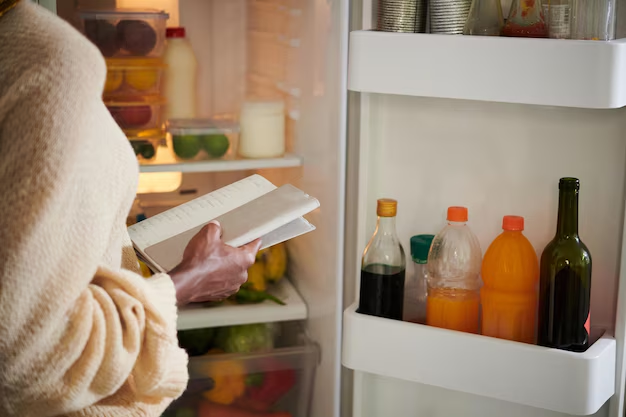Storing Your Semaglutide Safely: All You Need to Know About Refrigeration
In the realm of health management, semaglutide has gained attention for its role in treating certain chronic conditions. However, ensuring this medication remains effective is contingent on proper storage. Understanding how long semaglutide lasts in the refrigerator is crucial for maintaining its efficacy and your safety. This guide delves into the nuances of storing semaglutide, providing a comprehensive overview that benefits both new and experienced users.
Understanding Semaglutide: A Brief Overview
Before diving into storage specifics, it's worth understanding what semaglutide is. This medication is primarily used for managing type 2 diabetes and, in some formulations, for weight management. It's a glucagon-like peptide-1 (GLP-1) receptor agonist, which means it helps regulate blood sugar levels by enhancing insulin secretion and lowering glucagon secretion in response to meals.
The Importance of Proper Storage
Why Storage Matters
Medications like semaglutide require appropriate storage to maintain potency and stability. Incorrect storage conditions can reduce medication efficacy, potentially impacting health outcomes. For semaglutide, refrigeration plays a key role in preserving its chemical integrity.
Manufacturer Guidelines
Most semaglutide formulations come with manufacturer-recommended storage guidelines. These typically suggest keeping semaglutide refrigerated at temperatures between 36°F and 46°F (2°C to 8°C) until it’s ready to use. It's also important to protect it from light and not to freeze it, as freezing can damage the medication.
How Long Semaglutide Lasts in the Refrigerator
Semaglutide traditionally retains its effectiveness until the expiration date stated, provided it has been stored properly. This expiration is typically marked on the packaging based on the production date and assumes refrigeration.
After Opening
Once a semaglutide pen is opened, the storage guidelines may change, usually indicating the medication can be kept at room temperature (not exceeding 86°F or 30°C) for a specific period, often up to 56 days. However, during this time, if possible, continued refrigeration is preferable to ensure maximum potency unless otherwise directed.
Key Takeaways
- Refrigerated Storage: Store between 36°F and 46°F.
- Post-Opening Storage: Up to 56 days at room temperature, if necessary.
Maintaining Optimal Storage at Home
Refrigerator Placement
To optimize storage:
- Place semaglutide in the main compartment of the refrigerator, which typically maintains a more consistent temperature than the door.
- Avoid placing it near the back where it might freeze or near vents or fans that might cause temperature fluctuations.
Monitoring Temperatures
Regularly monitor the refrigerator's temperature to ensure it consistently remains in the recommended range. Simple fridge thermometers can provide peace of mind that medications like semaglutide are stored correctly.
🔍 Quick Tip: Consider placing a dedicated thermometer in the medication storage area of your fridge to catch any fluctuations early.
Addressing Common Storage Mistakes
Leaving at Room Temperature
While semaglutide can be left at room temperature temporarily, prolonged exposure outside the recommended temperature range could diminish its efficacy. It's wise to return it to the refrigerator as soon as possible if inadvertently left out.
Avoiding Freezing
Freezing semaglutide can damage the medication. Always ensure your fridge settings prevent this, particularly near the back where temperatures may drop lower.
When to Dispose of Semaglutide
Proper disposal of medication is as critical as proper storage. Discard any semaglutide if:
- It's past the expiration date.
- It's been improperly stored or looks unusual (e.g., cloudy or discolored).
- It has been left at room temperature beyond the recommended time frame post-opening.
♻️ Disposal Tip: Follow local regulations or consult a pharmacist for guidance on safely disposing of unused semaglutide.
Incorporating Semaglutide Storage into Your Routine
Organized Storage
Keep semaglutide with other medications in a designated area of your refrigerator. Consistent placement helps ensure it’s always stored safely and is easily accessible.
Reminder Systems
Consider utilizing smartphone reminders or marking a calendar to keep track of when the refrigeration timeframe started and when it might be time to dispose of an opened semaglutide pen.
Conclusion: Prioritizing Safety and Efficacy
Semaglutide, like many medications, is sensitive to temperature and light. By adhering to manufacturer guidelines and understanding the importance of proper storage, users can ensure they are receiving the full benefit of their medication regimen. Proper storage not only extends the life of the medication but also supports better health outcomes by maintaining its intended potency.
Embracing these practices empowers individuals to take an active role in their healthcare management, reducing the likelihood of complications due to storage missteps. As always, when in doubt, consulting a healthcare professional or pharmacist can provide additional insights tailored to specific needs.
By incorporating these routine checks and balances, the journey with semaglutide can be both informed and empowered, blending convenience with the confidence of optimal health management.
✅ Quick Summary:
- Optimal Temperature: Keep between 36°F and 46°F.
- Post-Opening: Ideally refrigerated, but room temperature for up to 56 days if needed.
- Avoid Freezing: Ensures medication integrity.
- Disposal: Follow local guidelines when discarding.
- Monitor Regularly: Use a thermometer to track fridge temperatures.
- Stay Organized: Keep all medications in a dedicated space.
Taking these steps ensures you maintain the medication's potency, helping manage health conditions effectively.
